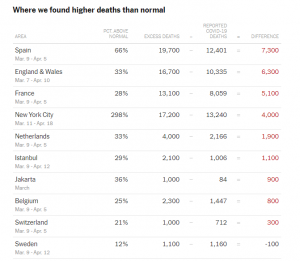John Whyte, MD, MPH: Hello. I'm Dr John Whyte, chief medical officer at WebMD. Welcome to "Coronavirus in Context." Today we're going to talk about whether we're managing coronavirus correctly; do we need to think about a change in our treatment regiments? My guest is Dr Cameron Kyle-Sidell. He's a physician trained in emergency medicine and critical care, and he practices at Maimonides in Brooklyn, New York. Welcome, Dr Sidell.
Cameron Kyle-Sidell, MD: Thank you very much. Thank you for inviting me.
Whyte: You've been talking a lot about the number of patients, the percentage of patients dying on ventilators. When did you first notice this trend?
Kyle-Sidell: In preparation of opening what became a full COVID-positive intensive care unit, we scoured the data just to see what was out there—those who have experienced it before us, primarily the Chinese and the Italians; it was hard to find exactly, like the rate of what we call successful extubation—meaning, someone was put on a ventilator and taken off. And that data are still hard to find. I imagine there are a lot of people still on ventilators. But from the data we have available, it appears to be somewhere between 50% and 90%. Most published data puts it around 70%. So, that's a very, very high percentage in general, when one thinks of a medical disease.
Whyte: You've been talking on social media; you say you've seen things that you've never seen before. What are some of those things that you're seeing?
Kyle-Sidell: When I initially started treating patients, I was under the impression, as most people were, that I was going to be treating acute respiratory distress syndrome (ARDS), similar in substance to AIDS, which I saw as a fellow. And as I start to treat these patients, I witnessed things that are just unusual. And I'm sure doctors around the country are experiencing this. In the past, we haven't seen patients who are talking in full sentences and not complaining of overt shortness of breath, with saturations in the high 70s. It's just not something we typically see when we're intubating some of these patients. That is to say, when we're putting a breathing tube in, they tend to drop their saturations very quickly; we see saturations going down to 20 to 30. Typically, one would expect some kind of reflexive response from the heart rate, which is to say that usually we see tachycardia, and if patients go too low, then we see bradycardia. These are things that we just weren't seeing. I've seen literally a saturation of zero on a monitor, which is not something we ever want and something we actively try to avoid. And yet we saw it, and many of my colleagues have similarly seen saturations of 10 and 20. We try to put breathing tubes in to avoid this very situation. Now, these patients tend to desaturate extremely quickly, so these situations have occurred. Still, what we're seeing—that there was no change in the heart rate—is just unusual. It's just something that we are not used to seeing.
Whyte: This is more like a high-altitude sickness. Is that right?
Kyle-Sidell: Yes. The patients in front of me are unlike any patients I've ever seen., and I've seen a great many patients and have treated many diseases. You get used to seeing certain patterns, and the patterns I was seeing did not make sense. This originally came to me when we had a patient who had hit what we call our trigger to put in a breathing tube, meaning she had displayed a level of hypoxia of low oxygen levels where we thought she would need a breathing tube. Most of the time, when patients hit that level of hypoxia, they're in distress and they can barely talk; they can't say complete sentences. She could do all of those and she did not want a breathing tube. So she asked that we put it in at the last minute possible. It was this perplexing clinical condition: When was I supposed to put the breathing tube in? When was the last minute possible? All the instincts as a physician—like looking to see if she tires out —none of those things occurred. It's extremely perplexing. But I came to realize that this condition is nothing I've ever seen before. And so I started to read to try to figure it out, leaving aside the exact mechanism of how this disease is causing havoc on the body, but instead trying to figure out what the clinical syndrome looked like.







